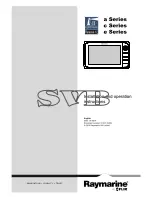
STEP #1
WARNING: TO PREVENT HIGH VOLTAGE FROM BEING PRESENT ON YELLOW/BLACK &
YELLOW OUTPUT LEADS PRIOR TO INSTALLATION, INVERTER CONNECTOR MUST BE OPEN.
DO NOT JOIN INVERTER CONNECTOR UNTIL INSTALLATION IS COMPLETE AND AC POWER
IS SUPPLIED TO THE EMERGENCY BALLAST.
STEP #2
WIRING THE EMERGENCY BALLAST
> See back page for detailed wiring schematics. The emergency ballast can be used with one- or two- lamp
fixtures, and operates one or two lamps in the emergency mode.
> Cut fixture wire between the lamp holder and AC ballasts and connect the blue and blue/white emergency
ballast wires to the AC ballast and the yellow and yellow/black wires to the lamp holder.
> On switched fixtures, an additional unswitched hot (120 or 277 VAC) wire must be run to the junction box
and connected to the emergency ballast.
> Connect LED by matching violet and brown leads. For optional tabbed LED, connect violet lead to positive
(+) tab (marked). For Illuminated Test Switch (ITS) connect as shown on wiring diagrams by matching
violet and brown leads and connecting the black leads to the emergency ballast white and white/black
wires.
> After installation is complete, supply AC power to the emergency ballast and join the inverter connector.
NOTE: Make sure that the necessary branch circuit wiring is available. An unswitched
source of power is required. The emergency ballast must be fed from the same
branch circuit as the AC ballast.
INSTALLING THE EMERGENCY BALLAST
> Disconnect AC power from the fixture.
> Refer to illustration below to install the emergency ballast and test/monitor plate. Make electrical
connections in accordance with the National Electrical Code and any local regulations. The test/monitor plate may be
installed close to the fixture in the ceiling or at a remote location (up to 50 feet). The emergency ballast may be
remotely installed up to 1/2 the distance the AC ballast manufacturer recommends remoting the AC ballast from
the lamp, or up to 50 feet, whichever is less. If no AC ballast is used, the emergency ballast can be remotely
mounted up to 50 feet away. Note: A switch box is not supplied.
INSTALLATION
STANDARD INSTALLATION
REMOTE INSTALLATION
Emergency ballast
No Shading – Equipment supplied by
others
1 – Flexible conduit (supplied) to connect ballast wires.
2 – Existing conduit to run existing wires to lamp holder (AC ballast on junction box). If AC ballast is on reflector, run
yellow, yellow/black, blue/white and blue wires from emergency ballast through this conduit.
3 – AC line in.
4 – Conduit and junction box (not supplied), necessary for remote installation.
2






















